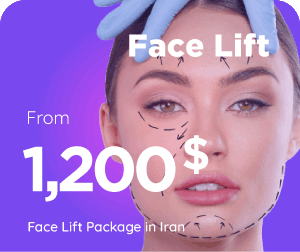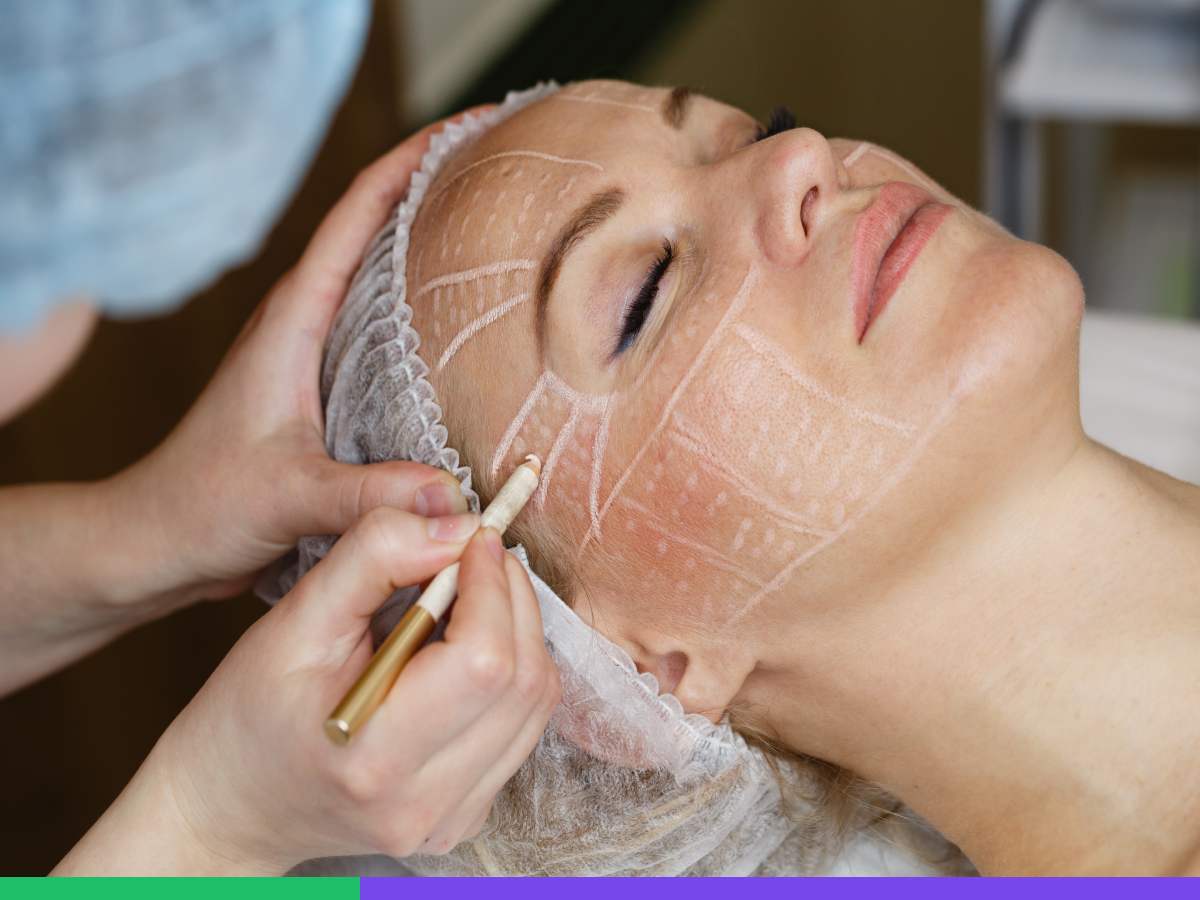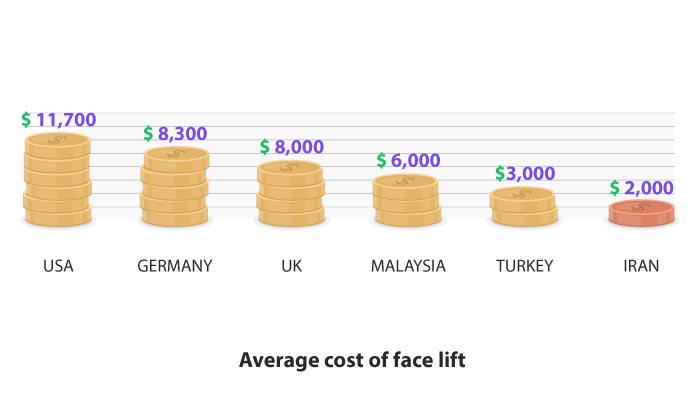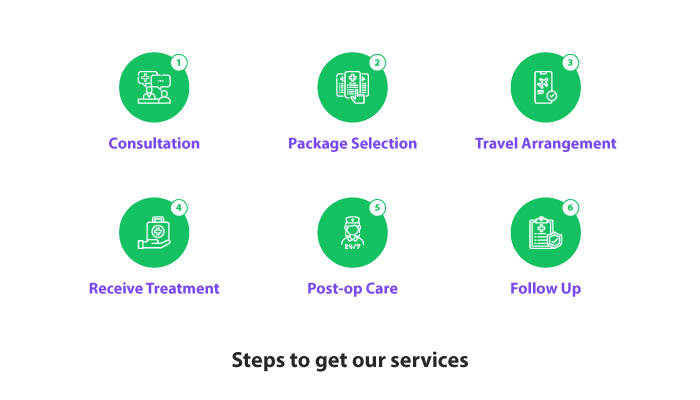Including these Services for Free
Medical tests
Rhytidectomy post-op care
Visa and Travel insurance
Interpreter
Food for all days
Medical consultation
Airport Pick up/Drop off
SIM card
Shopping
Sightseeing Tours
Medicine
Follow up
VIP Transfer
Internet

Flora medical tourism facilitator offers all-inclusive Otoplasty Packages all across Iran(Tehran, Mashhad, Kish island, Shiraz, Tabriz, Esfahan, Yazd, Ahvaz, Sari…), for any budget.
7 Night Accommodation in Iran




Flora medical tourism facilitator only has partnerships with the best hotels.
We will reserve accommodation for you at up to 40% lower price than anywhere else.
ALL INCLUSIVE OTOPLASTY PACKAGE IN IRAN from $1,400
What is Otoplasty?
Otoplasty is a procedure to change and enhance the shape of the ear to the desired one. This procedure is done for individuals who have ears that are sticking out, smaller than usual, or malformed. In otoplasty, the surgeon brings the ear back to a more natural and balanced position. The natural shape of the ear is when the cartilage of the ear is almost stick to the head. In some individuals, the outer ear can be non-existent, wrongly positioned or sized when they are born. As a corrective surgery, Otoplasty can help reform or reshape the outer ear.
Otoplasty Surgery Step by Step in Iran
1. Consultation for Your Otoplasty in Iran
During the consultation appointment, the surgeon will examine patient’s ears and health status and ask some questions about the procedure. These may include patient’s expectations, medical history including previous surgeries and the reasons for undergoing this procedure. The surgeon will also provide some information about the options for anesthesia and approaches to surgery, preparation, recovery, and the likely results patient may achieve. In this session, the patient can ask all his or her questions related to the procedure.
2. Otoplasty Surgery in Iran
The target area is highlighted. Patients can undergo either local or general anesthesia. Otoplasty on both ears typically takes about an hour and a half. The incisions are generally made behind the ears. It involves using special sutures to create the required folds, reducing or removing some parts of the cartilage. The shape of the cartilage is held with sutures and the incision is closed with dissolving sutures. A bandage is placed around the head.
3. Recovery for Your Otoplasty in Iran
Special care is required after passing a successful otoplasty. During this recovery period, you need to perform some instructions and avoid certain activities including:
- Take your pain medication to relieve the pain
- Avoid washing your hair entirely with shampoo during the first week
- After 1 week, the bandage is removed on your follow up visit
- You should be wearing a head bandage at night to protect your ears
- Most patients get back to normal life and can resume their work after the first week of recovery
4. Aftercare & Follow-up after Otoplasty
After spending about a week in Iran, you can continue the rest of your recovery period in your own country. We provide a 2-year follow up service for all our patients regardless of their surgery type. During this time, you will be in contact with specialists and receive necessary instructions via voice or video calls. Your doctor will also keep you under observation and you can ask any questions that you might have. The following are the main instructions that you must keep yourself in line with during your recovery:
- The complete recovery may be achieved after six weeks
- Stay away from smoking and drinking for a minimum period of two weeks
- Keep your head elevated during the first few weeks to allow for proper blood flow
- Avoid using a blow dryer or other hair drying tools to keep your head cool and dry during your recovery
- Apply ointments on a regular basis to the incision areas on your ear
- Do not resume any rigorous activity for at least two weeks after surgery
Find your Facelift day by day Schedule in this Article
Is Iran an Ideal Place for My Otoplasty?
There are many reasons that trigger people choose Iran as a destination for otoplasty including:
- Lower costs of otoplasty in Iran compared to other countries
- Large number of candidates for otoplasty
- Large number of hospitals in which otoplasty is performed
- Well-experienced surgeons
- Low cost of accommodation
- High quality operations and standards
How Much Does a Otoplasty Cost in Iran?
As an average price, an otoplasty can cost you around 3,736$ in the world. The otoplasty price surges to near $4,000 in the US and 5000$ in the UK. Compared with the price of $1,700 in Iran, there is a big gap between the cost of otoplasty in Iran and the world average. This lower cost does not come at the cost of quality of services or experience of surgeons. On contrary, Iran offers you a mixture of high standard services, skilled surgeons and very affordable prices from 1500$. Here at Flora, you can choose your otoplasty package which includes your whole surgery cost plus several free offerings at a price starting from 1300$
Why is Otoplasty done?
If you are thinking about having an otoplasty, read the following reasons why the procedure might be a useful option for you:
- Treating ear traumas such as microtia
- Pinning the ear back to a standard size for those with oddly big ears
- Augmenting the ear for candidates with smaller ear size
- Reshaping the ear to create the desirable look
- Enhancing your confidence by improving your appearance
Who is a Good Candidate for Otoplasty?
The best candidates for otoplasty are those who are dealing with one of the following problems:
- Large ear lobules
- Ear with different sizes and shapes
- Prominent ears
- Oddly big ears (Macrotia)
- Asymmetric ears
- Oddly small ears
- Ear deformities
- Being dissatisfied with appearance of the ear
Preparing for Otoplasty
Make sure to go in live with the following instructions to get well-prepared for your otoplasty procedure in Iran. The main instructions for otoplasty preparation include the below lines:
- Stay in a healthy diet, full of mineral and necessary vitamins for 4-6 months before your surgery
- Keep your body well–hydrated during the month before surgery time spot
- Try to get near to ideal weight prior to your surgery
- Avoid smoking and drinking for 4 to 6 pre-op weeks
- Do not eat anything from the night before surgery
- Make the necessary arrangements for a 2-week off-work period during your recovery
- Wear sunscreen daily, preferably for at least 2-4 weeks before your surgery time
Types of Otoplasty
Typical for any procedure, otoplasty is also divided into two main types; surgical and non–surgical. The below cases are the main types of surgical otoplasty:
-
Ear augmentation
This option can help people with small size of ears to bring them back to a standard size. The surgery may also help patients achieve symmetry in their ears by evening out their sizes.
-
Ear pinning
Ear pinning is a type of cosmetic Otoplasty that draws protruding ears closer to the sides of the face. During the procedure, the surgeon removes cartilage and skin behind your ears and pins back your ears. Here, he/she mainly uses permanent sutures, or stitches to perform the procedure. The procedure is mainly for children at age 5 or 6, but some adults also choose ear pinning to improve their appearance.
-
Ear reduction
If you have an overly big ear size, ear reduction can help reduce your ear size to the standard proportion. The procedure mainly works by pinning back the ear to the right smaller size to create a better appearance.
However, if you would rather not to risk the complications of a surgical procedure, you can opt for a non-surgical Otoplasty procedure as following:
-
The incisionless otoplasty
This procedure comes with several advantages such as involving no cutting of ear cartilage, lack of any permanent scaring, and no need for anesthesia. During the procedure, the surgeon will apply special sutures to create a more symmetrical appearance in the ears. However, contrary to a surgical otoplasty, the sutures added during this procedure will remain intact after the procedure. However, the sutures will not be visible to the naked eye.
-
CO2 laser-assisted otoplasty
This is a novel technique that improves the appearance of protruding ear shape without resorting into incisions. There are mainly two objectives for the CO2 laser-assisted otoplasty procedure. The first objective is to decrease the mastoid-scapha angle up to approximately 30°; and the second is for the conchal-scapha angle to be reduced to its usual angle of approximately 90°. This procedure can help restructure the scapha and the antihelix fold, diminish the size of the concha.
Is it worth to undergo an Otoplasty?
There are several reasons why an otoplasty is a worthy choice for the right candidates. Read the following main advantages that an otoplasty procedure can bring to you:
- Treating asymmetry in your ears
- Oddly big ears
- Ear deformities
- Having ears with different sizes and shapes
- Prominent ears
- Inappropriately small ears
Techniques of Otoplasty
Otoplasty techniques go into three main categories; suturing techniques, scoring techniques, and EarFold method. In below you can find some details about how these techniques work:
Suture fixation technique (by Mustardé)
Suture fixation use a foreign material called sutures to create the desired shape in the ears. The use of sutures has several advantages such as being totally adjustable, and suitable for correction of ear prominence. These sutures get rarely infected and are permanent but in a way that they are not visible. The following is how this technique is mainly performed:
- The surgeon starts the procedure by injecting local anesthetics
- Next, he/she makes a long incision on the back of the ear and removes a strip of skin
- He/she dissects the skin from the cartilage between the edge of the ear (helix) and the place where the ear is attached to the head (sulcus posterior). This exposes the skin to the cartilage on the back of the ear
- He/she bends antihelix fold more strongly and forms a new one with sutures that are anchored in the cartilage (The cartilage is left completely intact)
- At last, the skin is closed using sutures
Anterior scoring techniques
Anterior scoring otoplasty is a commonly used technique to create an improved antihelical fold. As its name suggest, it uses scoring and cutting instead of sutures to bring the target shape to the ear. If needed, the surgeon may use a combination of scoring and suturing technique to achieve finer results. In below you can find the main steps of the technique:
- The procedure starts with marking the intended antihelix
- Next, the surgeon will apply local anesthetic and Epinephrine
- The surgery continues by removing the ellipse of the posterior skin
- He/she makes incisions along the scapha postero-laterally
- Scoring takes place in line with the marking of the intended antihelix
- If needed, a vicryl stich is used to keep the free edge of the cartilage
EarFold method
This is a technique for pinning protruding ears that uses a metal implant made from nitinol instead of sutures. The technique offers several advantages such as are fast and permanent results, lower costs, with barely visible scars. Moreover, the candidate can see the potential results device called pre-fold device before the surgery. The following are the main steps of performing this technique:
- The surgery begins with injection of local anesthesia
- Next, the surgeon first makes a tiny incision in the skin that is about 5mm
- Then, he/she lifts away the skin from the ear, revealing the underlying ear cartilage
- Afterwards, the surgeon will place the implant in the target place
- At last, the surgery ends by re-draping the skin over the implant, and closing the incision using dissolvable stitches
Otoplasty for cauliflower ear “ microtia
Cauliflower ear is a common trauma for wrestlers, boxers or martial artists. If left untreated, the condition may turn into a permanent deformity as cartilage tissues in the ear die by fibrosis. Here, an Otoplasty can help treat the cauliflower by removing the tissue. The following are the main steps of the procedure:
- The procedure starts with an incision behind the ear which allows for the skin to set back to the front of the ear exposing the cartilage deformity
- Then, the surgeon removes malformed, fibrous scar tissue to treat the condition.
- At last, he/she stiches the incisions closed
What is Bilateral Otoplasty?
Bilateral otoplasty is a surgical procedure on both ears to pin and reshape them to a desired profile. Contrary to the unilateral otoplasty which is performed only on one of the ears, bilaeteral otoplasy is the most common type of otoplasty. The procedure of Bilateral otoplasty is no different from the surgery for a single ear, with the same recovery time, potential complications, and benefits
Risks and Side effects of Otoplasty
Risk is an inevitable part of every surgical operation. Although Flora tries to provide you with safest Otoplasty, there are certain possible risks associated with the surgery including:
• Bleeding
• Blood clots formation
• Infection
• Allergies to anesthesia
• Tissue damage
In addition, there are certain side effects that might come with an Otoplasty procedure such as:
• Scarring
• Bruising and swelling
• Asymmetry in ear placement
• Sensation changes and numbness
• Problems with stitches (They might run to the surface of the skin)
• Poor results (Need for a revision surgery)
• Overcorrection (Your ears appear to be pinned back)
How Can I Get My Otoplasty Surgery Arranged with FloraMedTour?
Clearly, medical Facilitators are a huge help with arranging travel details. Flora medical tourism facilitator is a necessary means to ensure that you get the best care for your health issues. First you should send a request. Then, our consultant will contact you and guide you through all the process. When you decide to have a trip to Iran and otoplasty surgery arranged, FLORA medical tourism agency will arrange all the necessary clinical, travel and hospitality services.
FREQUENTLY ASKED QUESTIONS ABOUT OTOPLASTY
Is Otoplasty medically necessary?
Though Otoplasty is mainly a cosmetic procedure, it can also be performed for medical reasons including: to approximate a normal appearance, to improve function of the ear
What is Pinnaplasty?
Otoplasty and Pinnaplsaty are two medical terms referring to a surgery aiming to correct ear size and shape. These two terms are interchange used and there is no difference between them.
What is prominent ear correction?
Prominent ear correction surgery is suitable for adults as well as children from about 5 years and over. This surgical procedure removes a small section of skin from ears to give back the right shape and proportion to it.
what is ear pinning otoplasty?
Ear pinning is a type of otoplasty on the outer ear that removes cartilage and skin behind your ears and pins back your ears. The surgeon mainly uses permanent sutures, or stitches to do the procedure. Ear pinning is usually performed for cosmetic or aesthetic purposes.
Is Otoplasty painful?
Every surgical procedure comes with certain amount of pain and ear pinning surgery isn’t an especially painful surgery.
How long should I wear a headband after Otoplasty?
You should typically keep wearing a headband for 6-8 weeks after your otoplasty surgery.
How long does it take for Otoplasty to heal?
Full recovery of otoplasty can take up to 6 weeks, but you should be able to go back to work after passing 2 or 3 weeks.
What is the age range for Otoplasty surgery?
Same as any other type of surgical procedure, you should at least be 18 years old to be eligible for an otoplasty procedure.
Where are the incisions made when performing an Otoplasty?
Incisions are made from the back surface of the ear using non-removable sutures. If necessary, the incisions go on the front of the ear.
How long do Otoplasty results last?
As otoplasty cuts out a portion of the ear, the results last forever unless a revision surgery is necessary.
Can Otoplasty be undone?
In some rare cases a stitch can come undone and therefore you might need a follow up procedure to correct it.
Is it possible to reverse an Otoplasty?
For surgical procedure a reverse otoplasty is only possible to some extent. However, a non-surgical otoplasty can be easily reversed a few weeks after the procedure if you are not content with the results.
Can Otoplasty be covered by insurance?
Generally, insurance does not cover otoplasty for cosmetic purposes unless it is medically necessary.
Can Otoplasty cause tinnitus?
There is no link between Otoplasty and tinnitus. However, the change in the shape of your ears can impact hearing.
Is it possible to make your ears smaller by means of an Otoplasty?
Otoplasty can reshape, pin back and reduce the size of your ears to the desired proportion.












